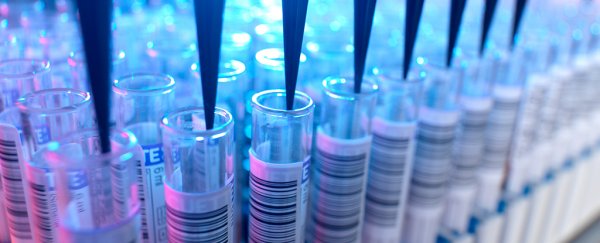Pool testing (also called group, or pooled testing) is a technique for assessing the presence of a contagion in a large group of individuals referred to as a 'pool'.
Usually, medical specialists collect body tissue or fluid from a single person and run a diagnostic test to find evidence of a specific infectious agent, like a known virus or bacterium.
This test should indicate with a certain degree of accuracy whether the person is carrying the pathogen.
Combining the tissues or fluids from numerous people and running a single test is a faster alternative that uses fewer materials and requires less labour.
If no evidence of the infectious agent is found, all people within the pool are considered to be negative. If the diagnostic test finds any sign of the pathogen, samples from each individual in the pool will need to be tested again, this time on their own.
When should pool testing be used?
Ideally, pool testing should be used when there is a considerable threat of an infection spreading through a local population, but it has to happen while incidence of the disease is still low.
It has been routinely used in the past by organisations to test for the presence of communicable diseases that are asymptomatic or yet to present symptoms, such as chlamydia; or when testing is expensive, such as for HIV in the 1980s.
Is pool testing performed for COVID-19?
For this reason, pool testing has been put to use on occasion during the COVID-19 pandemic. Authorities at the location of the initial outbreak, Wuhan in Hubei Province, China, managed to assess 9 million individuals over just 10 days by using this technique.
The US state of Nebraska also used pool testing during the early stages of the pandemic as test supplies ran low. Stanford University also conducted a screening of citizens in California's Bay Area using this technique to track the early spread of the novel coronavirus.
Few other US states have put it to use, largely as the technique had yet to be granted FDA approval. Nebraska has since ceased pool testing because the virus became too widespread in the population.
Why isn't pool testing more common?
Given the advantages of saving time and resources, it's easy to think pool testing is a no-brainer. But there are some serious downsides to consider.
For each individual test, there is a chance that the test will miss important evidence of the pathogen being present. This is called a false negative.
Combining specimens dilutes each sample, making it easier for a pool test to miss a vital clue. Pool testing therefore raises the risk of false negatives, which is bad news when you're trying to catch potential superspreaders before they get spreading.
The technique could become more popular as the pandemic continues - at least in places that more or less have the virus under control. As of June 2020, the FDA has updated its templates for test developers to outline expectations on pool testing.
All Explainers are determined by fact checkers to be correct and relevant at the time of publishing. Text and images may be altered, removed, or added to as an editorial decision to keep information current.
